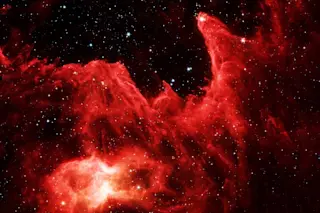Hot, bright stars fill the arms of spiral galaxies. But what about the dark gaps between the arms? Are they filled with dark dust, as some researchers have supposed? Astronomers at the University of Chicago and the University of Alabama say no: they’ve found evidence that the gaps between spiral arms are indeed as empty as they look.
The astronomers studied pairs of galaxies in which one lies behind the other, so that the galaxies partially overlap along our line of sight. By measuring how much of the background galaxy’s light made it through various regions of the foreground galaxy, they could determine where the foreground galaxy was choked with light-absorbing dust.
Most of the dust turned out to be in the bright arms; the space between the arms and the outer parts of galactic disks were much more transparent. We find that it’s not unusual for only 15 to ...














